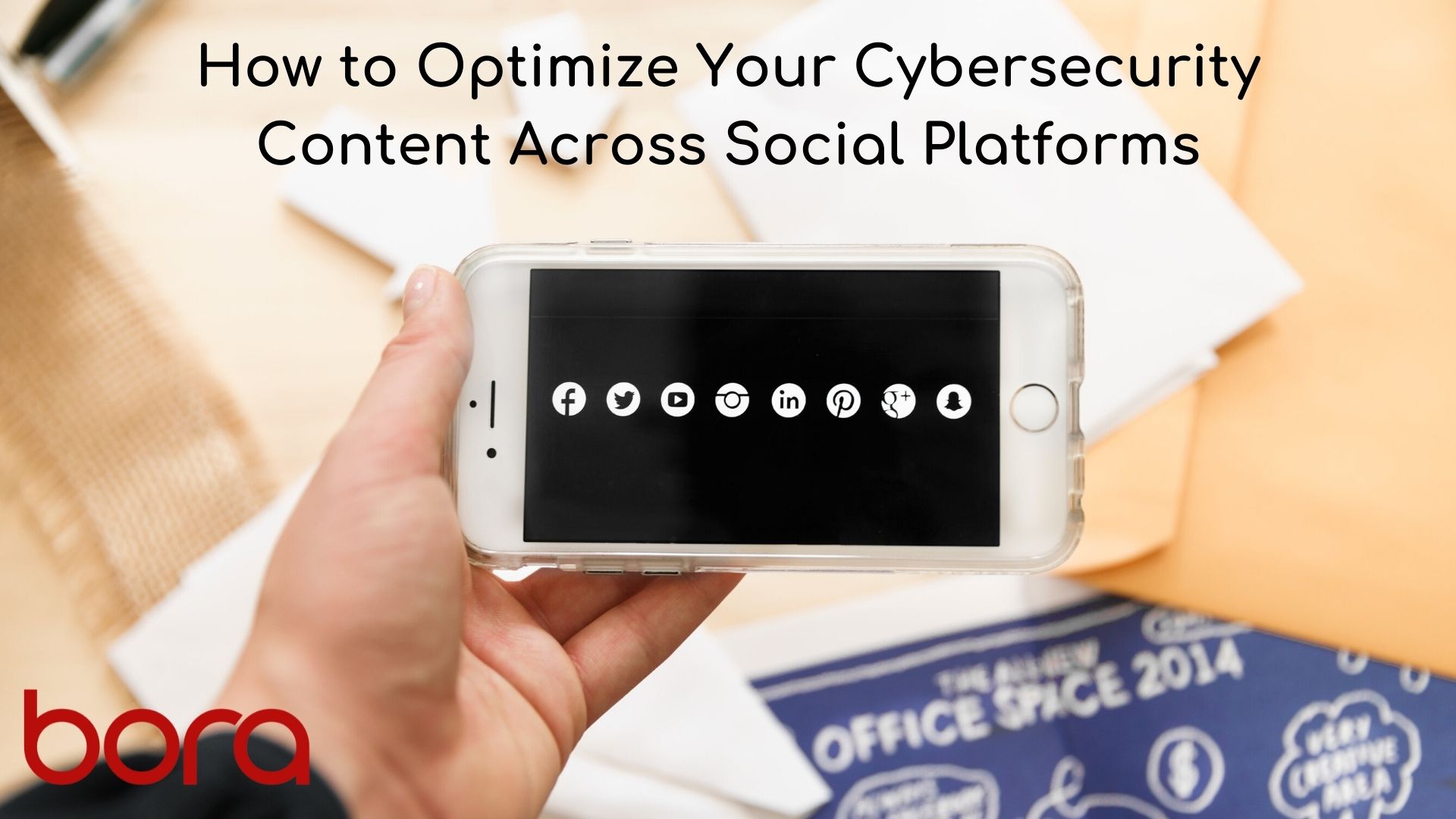How many social media platforms do you share content on? Recent statistics say that the average user engages with almost 7 social platforms. While engaging with your audience via social continues to be a necessity, sharing social media content isn’t a one-size-fits-all exercise. It’s important to have a strong cross-platform campaign strategy to ensure you deliver the right message on each platform. This article will explore how to best package content for the top social media networks for cybersecurity companies.
When it comes to Twitter, less is more. Short-form information is best with this platform. It’s important to capture attention and convey a message in as few words as possible. Since you are using fewer words, get straight to the point. For example, instead of tweeting the title of an article, you are linking, tweet a summary of it that will entice readers. Use relevant and trending hashtagsWhat Are Hashtags? Hashtags are a form of metadata used on social networks such as Twitter, Instagram, Facebook, and others, marked by the prefix “#”. Originally popularized on Twitter, they... More – studies show that tweets with hashtags can increase engagement by 50% but same as above, less is more when it comes to the number of hashtags.
The most important thing to keep in mind as you are creating or repurposing content for LinkedIn is that industry-related content that invites discussion is the best practice. It’s a professional platform so keep it professional. LinkedIn says “publishing thought leadership content on your Company Page is one of the most powerful ways to grow your audience”. People-centric content performs well, celebrating customers, partners, work anniversaries, etc. Posts like pictures, congratulations, and videos – keeping people center of your content will encourage a lot of interactions. The best way to maximize engagement, regardless of the type of post, is to have some type of call to action at the end of your content. Ask a question to encourage comments, ask people to follow you, and share your content.
With Facebook, the keyword here is conversational. As you are tailoring your content for Facebook, keep your messaging friendly and accessible. This will make your marketing content feel less spammy and encourage click-throughs. Although many businesses now use Facebook to connect with their audience, the app’s original purpose was pleasure. Most people are still using the platform for connecting with family and friends, so using a conversational tone will mingle better in the news feed among the weddings, babies, birthdays, and the amazing sunset last night. Recent stats show that stories inspire action – 56% say stories of a product or service inspired them to browse a brand’s website and 50% said they were interested in stories to introduce them to a new product.
Strategies for all platforms
Now that you are versed in the nuances of tailoring your messaging to the platform, the following strategies work well across all social media apps:
1. Videos
Videos are a consumer’s favorite type of content to see from a brand on social media. In a 2021 Video Marketing Statistics report, 69% said they’d prefer to watch a short video to learn about a product or service (compared to 18% for text-based posts, 4% for infographics, and 3% for downloadable assets. Even more impressive, 87% of video marketers report video content is a good ROI.
2. Interactive content
All social media algorithms favor content with lots of user interaction. The more likes, shares, and comments your content gets, the more relevant it will appear. Here are some examples of interactive content that invites users to engage and interact:
Polls and quizzes: Not only are these a great way to engage your audience but you can also leverage them to get to know your audience on a deeper level and tailor your content based on the results.
Live streaming or interactive video: These could include a live interview or Q&A session. People love the feeling of watching something live. This is a good way to educate your audience while also generating engagement. Interactive video is a new emerging trend where users can interact with the video.
Live infographics: Static infographics are so five years ago. Infographics now should be interactive so that it highlights data that the user can interact with. This can be achieved by allowing the user to tweak the data, so it is more relevant to them, or by allowing them to dive deeper into a set of statistics.
3. UGC or EGCpleasure meaning
User-generated content (UGC) or employee-generated content (EGC) helps to show the value and story of your brand. Sharing UGC or EGC not only engages with the creator (user or employee) but is likely to capture their followers and engage with them. This helps to establish trust in your brand, kind of like the modern word-of-mouth marketing.
4. Evoke emotion
Connecting with your audience on a deeper level and bringing a human element to your brand is a must for any marketing strategy and social media is no different. The emotions you evoke should align with your brand strategy and the type of people you are aiming to resonate with. Videos are one of the most effective types of content for evoking emotion.
5. Read, Reply and Share
Curating and posting your content is not enough, you must also engage on social media. Comment, like, and share content that is relevant to your brand. Interacting with others will increase the interactions on yours.



